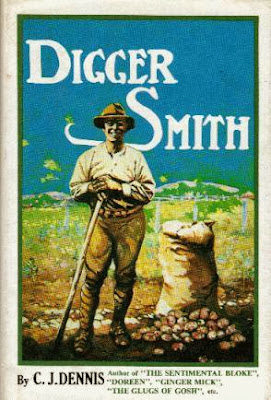Crowds uv these lads I've known, but
then,
They 'ave got somethin' from this war,
Somethin' they never 'ad before,
That makes 'em better men.
When Robert
Charles Smith first enlisted in July 1915, he said that he had spent 18 months
serving on the John Murray, a
training ship that had been commissioned by the Victorian Government in 1910
with the aim of training juvenile offenders for a life in the navy or the
merchant navy. Presumably, then, Robert Smith had fallen foul of the law at a
young age. He was one of 411 boys who
passed through the ship between 1910 and 1918. Frank Purcell writes that
The John Murray was dogged by misadventure and controversy. Allegations of 'unnatural practices' brought an odium on the ship which a Police Magistrate's Inquiry in 1911 and a Royal Commission in 1915 were not able to dispel entirely. What was meant to be an institution for the formative training of juvenile offenders soon became a political and financial embarrassment. Established to train seamen for the navy and the merchant service, discipline was harsh and desertion rife. (Frank Purcell, The Prison on the bay: The story of the Victorian training ship John Murray, F. Purcell, Melbourne, 1997.)
Image courtesy State Library
of Victoria.
Image H99.220/3820.
Robert
Smith was 13 when he went onto the ship in December 1910. His parents had
signed him up for a period of twelve months, but in January Robert was
assaulted by an instructor who had ‘caught hold of him and pulled him down’. He
screamed, drawing the attention of other boys who helped him get away and
reported the matter to the Captain. The man was later dismissed, but Robert’s
father Henry was not happy and when Robert came home on leave in June 1911, he
did not allow the boy to return. Instead, Robert went back to school where he
was apprehended (Henry Smith claimed it was kidnapping) and returned to the
ship. The police did nothing, so Henry Smith went to Labor politician George
Prendergast who raised the matter in Parliament, thus sparking an inquiry at
which Robert and his father Henry both gave evidence, as can be seen in the
following article in the Argus, 22
November 1911.
Robert
Charles Smith was born in Coburg in 1898, the son of Henry Smith and Florence
Elizabeth Smith. The family did not remain in Coburg, however, and at the time
of his enlistment they were living in South Yarra. However, Robert did not lose
his ties with the area entirely and on discharge lived firstly in Carlton then
Brunswick and finally in Melbourne itself, so he always lived in the vicinity
of Coburg, so I’ve included his story here.
After
enlistment in July 1915, 2856 Private Robert Charles Smith sailed to Europe
with the 9th Reinforcements of the 14th Infantry Battalion. He
arrived in France in January 1916 where he experienced a great deal of illness
– dysentry, debility, influenza and cardiac problems and was returned to
Australia in 1917. He persisted, though, and re-enlisted in March 1918, by
which time he was married. He was accepted as a driver in the Transport Unit,
but was only allowed to served in Australia. Even then, poor health plagued him
and after two spells in hospital he was discharged. He enlisted once more in
January 1919 and served until May 1919 when his services were no longer
required.






















